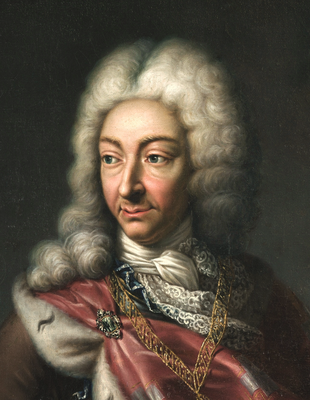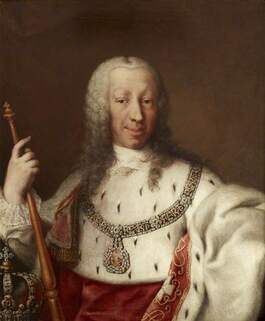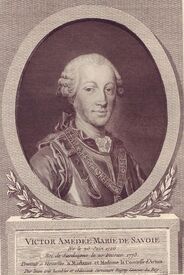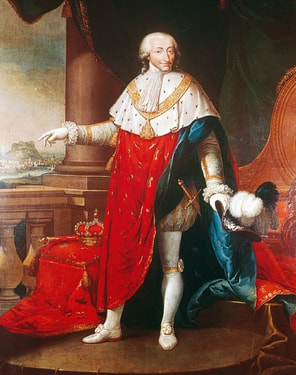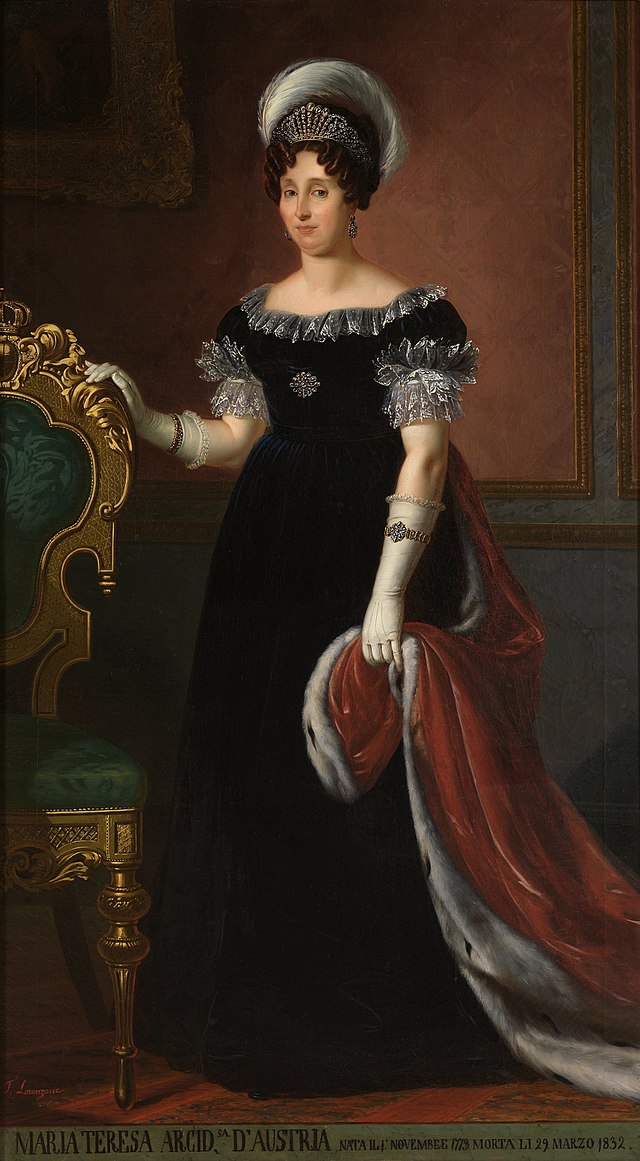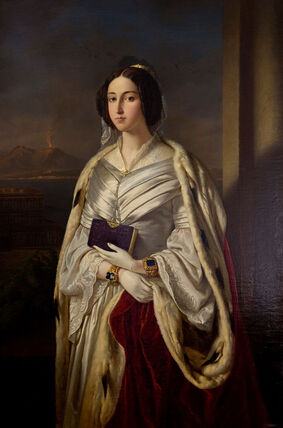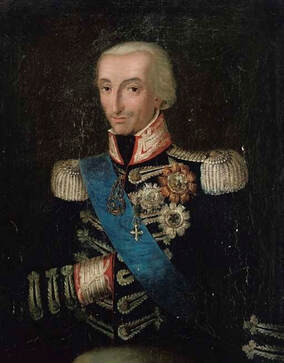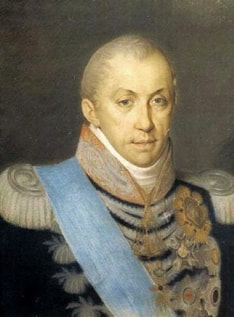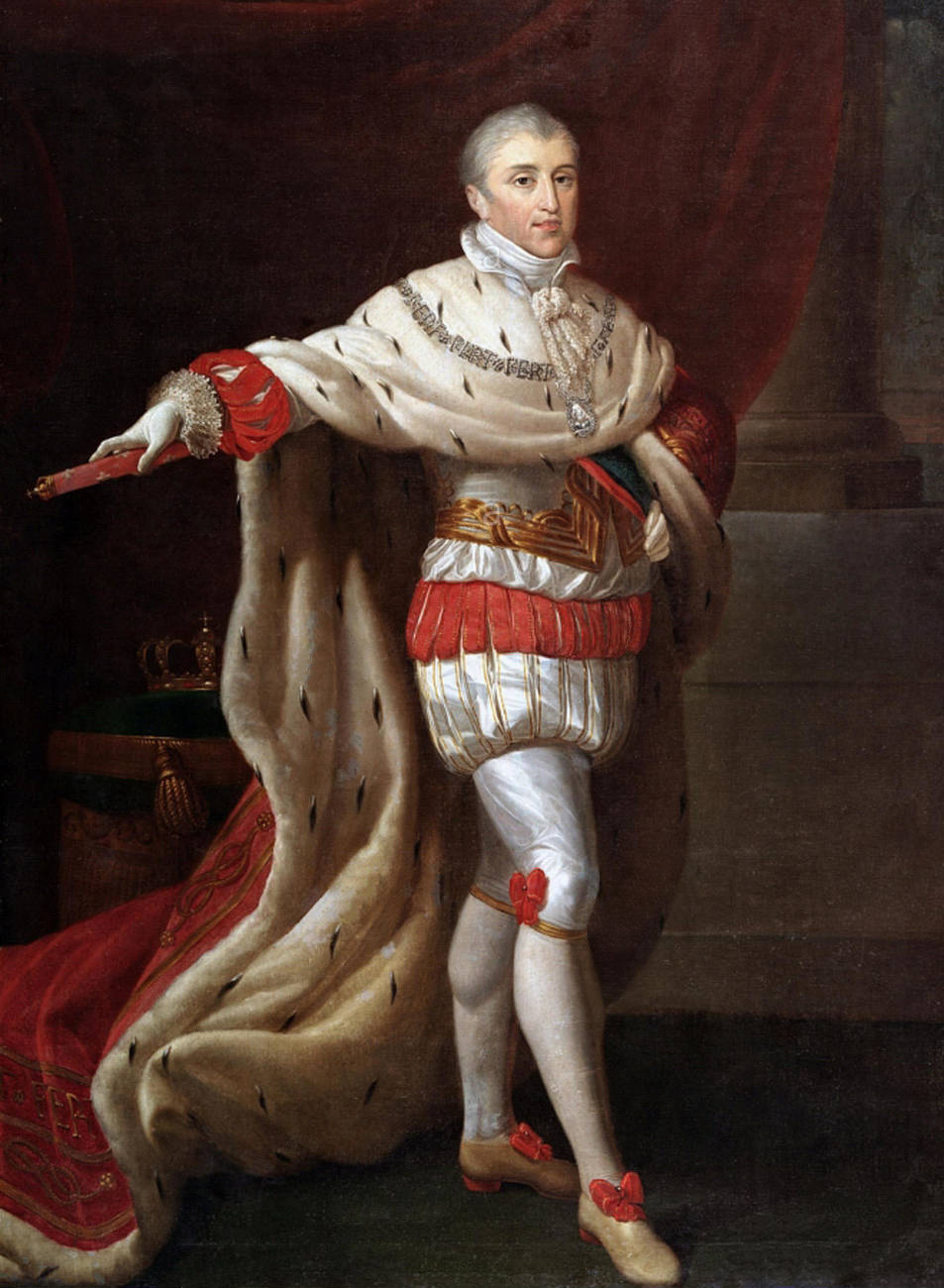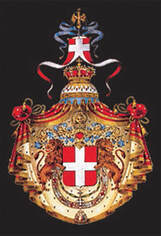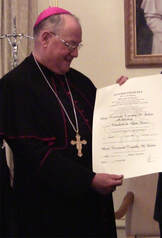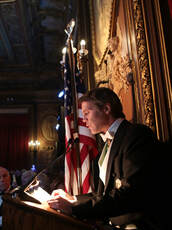American Delegation of Savoy Orders
A Royal House: The First Kings (1713 -1861)
|
The Fifteenth Duke, Victor Amadeus II (1666-1732), was born in Turin. He was only nine when he succeeded his father and his mother, Maria of Savoy-Nemours, became Regent. These were tumultuous times for Europe. King Louis XIV of France was on a grand quest to become Europe's greatest monarch and to increase Bourbon power at the expense of all, but particularly the Habsburgs, perpetual rivals of the Bourbons.
A shrewd politician and statesman, the Duke of Savoy switched sides numerous times to maintain the independence of Savoy. His alliances were flexible. The fact that two of his daughters were married to grandsons of King Louis XIV (one was the wife of the Duke of Burgundy and the other married to King Philip V of Spain) and he himself had married a niece of the King of France did not deter him from turning against the French when it was necessary or expedient. An alliance with the Imperial forces in 1703 resulted in the French occupying Turin. Victor Amadeus finally liberated the capital with the assistance of his cousin, Field-Marshal Prince Eugene of Savoy, one of the ablest military leaders of the day. |
Victor Amadeus ordered the construction of the Royal Basilica of Superga in Turin in thanksgiving for the liberation of the city. In quick succession, Nice and Susa were also retaken from the French. The Treaty of Utrecht in 1713 ended the War of Spanish Succession and, for his participation, conferred Monferrat and the Kingdom of Sicily upon Victor Amadeus. The Duke of Savoy was now a King with the style of Majesty. In 1718, the title of King of Sicily was exchanged for that of King of Sardinia, the title that he and his successors would retain until the unification of Italy in 1861.
Tired of the constant wars and political intrigue, the King abdicated in 1730 and retired to Chambéry. He also married the Countess of San Sebastiano, a cunning and ambitious woman who induced her husband to try to take back his throne. The coup failed; he was imprisoned by his son and died in 1732. He interred in the Basilica of Superga. |
|
His brother, King Victor Emmanuel I, "the Tenacious" (1759-1824), inherited half a kingdom on the abdication of his older brother.Having lost Piedmont and Savoy, the Fifth King was content to harass the French from his island stronghold of Sardinia.A cautious and uncompromising man, he also had a good military training and was not afraid to use it if there was a chance of success. The King knew, however, that his forces alone could never stand up to Napoleon's battle hardened legions. His strategy was to wait for the Coalition to defeat the French. He declined all offers of alliances to return part of his domains. There would be no compromise: either he would reacquire all his realms or lose them all. In those long and difficult years in Sardinia, the King rejected any notion of any peace with the Corsican. Victor Emmanuel I finally returned to Piedmont on Napoleon's defeat in May 1814.
The Congress of Vienna restored all the pre-revolutionary territories to Victor Emmanuel I and added the Duchy of Genoa. On August 14, 1815, the King instituted the Military Order of Savoy, partly to reward the many subjects who had contributed to the liberation of the kingdom and also to establish an order of merit. His only son, Charles Emmanuel, predeceased him and he therefore had no direct male heirs. His daughters achieved successes, however. Maria Anna married Emperor Ferdinand I of Austria-Hungary; Beatrice married Grand Duke Francis of Modena; Theresa wed Duke Charles II of Parma and Maria Cristina became the consort of King Ferdinand II of the Two Sicilies. The latter daughter died giving birth to her only child, the future King Francis II of the Two Sicilies, called the "bambino della Santa", because Pope Pius IX declared Maria Cristina Venerable in 1859. |
|
The years of war and revolution had taken a toll on the King. He abdicated on March 13, 1821 in favor of his brother, the Duke of Genoa, who became King Charles Felix, "the Firm" (1765-1831). Victor Emmanuel I lived till 1824 and was buried at Superga. Charles Felix was a well-liked, yet firm, sovereign. He was a patron of the arts and sciences as well as the Church. Having endured the ordeals of revolution and restoration, he preferred the nature and serenity of the Savoy region to that of the tumult of the Piedmontese cities. He also did not fully trust the urban dwellers of Turin. He and his wife, Christina of Bourbon-Two Sicilies, were fundamentally attached to their ancestral territory high in the Alps. It was there that they both commenced the monument to their family.
The Abbey of Hautecombe had been desecrated and ruined by the French during the years of occupation. The King ordered the restoration of the final resting place of so many Savoy princes and established a religious community in the precincts. This extraordinary monument owes its survival to the King's determination to preserve the Savoy presence in the cradle of its birth. A fine statue of Charles Felix in his robes as Grand Master of the Order of Saints Maurice and Lazarus, with serene gaze, still stands in a central place in the Abbey of Hautecombe. He died childless and with his death ended the senior branch of the House of Savoy. Charles Felix directed that he be laid to rest in Hautecombe instead of Superga in Turin, the modern mausoleum of his House. |








